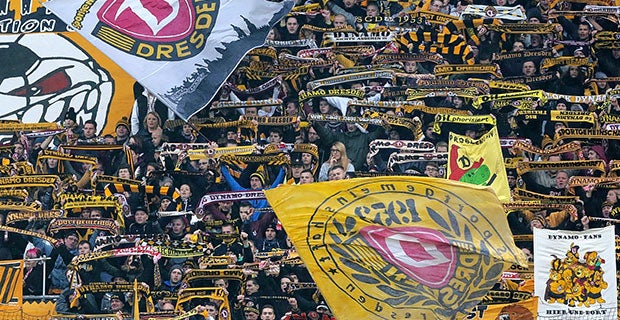Can you kick it? Bundesliga gives you wonderful atmospheres, old-fashioned terraces, cheap beer and the odd line of crystal meth
Growing use of addictive drug is beginning to marr the Bundesliga’s success story

Christian Seifert’s job is easy these days. On Thursday, for example, the chief executive of the German football league (DFL) gave a speech in which he rattled off the successes of the Bundesliga with its record revenues and ticket sales.
German football is booming. The TV deals are ever more lucrative, Die Nationalmannschaft have won the World Cup, and the few young players who do leave almost invariably end up being sold at astronomical prices to the best European clubs.
As its primary publicist, Seifert can just ride the wave. When the clubs return from the winter break next weekend, fans will arrive from all over the world, Britain included. In Germany, they will find wonderful atmospheres, old-fashioned terraces, cheap beer and maybe even the odd line of crystal meth.
Seifert didn’t mention the crystal meth. Nobody really does. But this highly addictive drug is beginning to emerge as a problem in the Bundesliga. Across the country, usage is increasing and its popularity is particularly notable among Germany’s hardcore hooligans.
In December, Dr Roland Härtel-Petri was invited to give a lecture to representatives from German clubs on the subject of “drugs in the fan scene”. Patients at his rehabilitation clinic, he told his audience, had reported that crystal meth was not only useful to heighten energy in violent clashes with other fans, but was also a way of entering stadiums under the influence.
“Alcohol remains the main issue, but crystal meth is far from something which only appears as a one-off,” Härtel-Petri told the German newspaper Welt last month. “The DFL is beginning to accept that.”
The fans, though, seem to know what is up. At a game against FC Cologne last season, Dynamo Dresden fans held up a banner reading “Don’t meth with Cologne? We’ll blow you away”. The latter phrase, in German, amounts to a pun on the word for “snorting”.
Prior to their 3-0 victory over Nuremberg last March, Borussia Dortmund fans were forced to take down a banner reading “Not enough money for cocaine, Nuremberg? Why else the dirty Czech muck?” Most of the crystal meth in circulation in Germany is bought inside the Czech border, where the drug is peddled at low rates. Accordingly, it is the clubs nearest the border, such as Dresden and Nuremberg, who are worst hit.
General acceptance of the issue, however, is hard to come by in the football world. Most clubs protest complete ignorance on the matter, and even supporter liaison groups are unwilling to talk about it. Of the two clubs which are reported to be worst hit by the phenomenon, Dynamo Dresden constantly insist that this is a “societal problem”, while Nuremberg deny that it is a major issue in their stadium, despite "the dangers of such drugs being addressed" in dialogue with the fans.
One of the issues for the clubs is that it is almost impossible to gauge just how widespread the use of crystal meth is, in football and in general society. Marlene Mortler, head of the drugs office at the German Ministry of Health, claims that “the spread of this dangerous drug has to be stopped as soon as possible”, but admits that “we don’t really have access to statistics and figures when it comes to its use in football”.
Police in Dresden and Nuremberg are equally unable to provide figures or even extensive knowledge, while the European Monitoring Centre for Drugs and Drug Addiction seems to misjudge the threat, saying “usage is limited to the Czech Republic, but has spread partially into Slovenia”.
Crystal meth, though, is definitely in Germany, and is definitely around football stadiums. According to the account of one Dresden taxi driver, fans frequently act aggressively towards him under the influence of the drug as they travel towards the stadium. He refers to it as “the devil’s toy”. Dresden is not the only city hit. In Leipzig last November, narcotics police confiscated around 2.9 tonnes of chlorephedrin, the base ingredient for crystal meth.
Most remarkable about the phenomenon of meth in football is the tentative reaction. One of the major strengths of Germany’s thriving fan culture is the open dialogue with fans and the media. Yet in the case of crystal meth, there is nothing but reticence. Despite Härtel-Petri’s assertion that the DFL are dealing with the issue, his own speech remains the only time the issue has been addressed officially.
While everyone is happy to talk about full stadiums, record figures, and even about how to control violence, crystal meth remains taboo.
Subscribe to Independent Premium to bookmark this article
Want to bookmark your favourite articles and stories to read or reference later? Start your Independent Premium subscription today.

Join our commenting forum
Join thought-provoking conversations, follow other Independent readers and see their replies